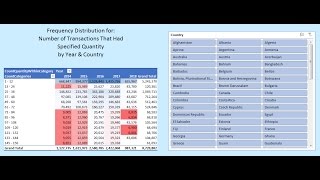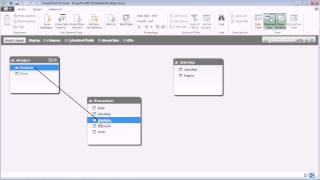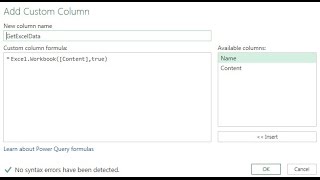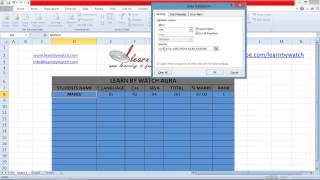Wednesday, 24 December, 2025г.
















Где искать: по сайтам Запорожской области, статьи, видео ролики
пример: покупка автомобиля в Запорожье
Highline Excel 2016 Class 22: How To Build Data Model & DAX Formulas in Power Pivot
Download Files: https://people.highline.edu/mgirvin/AllClasses/218_2016/218Excel2016.htm
In this video learn about:
1. (00:16) Introduction to Entire Project, including what type of start files we have and what the final report looks like.
2. (03:36) What is Data Modeling? Steps to creating a Data Model.
3. (05:07) Data Modeling Step 1: Power Query to Clean, Transform & Import Fact Tables
4. (11:22) Data Modeling Step 1: Import Dimension Tables from an Excel Sheet
5. (12:23) What is a Calendar Table (Dimension Table)? Why a Calendar Table and not Group by Date?
6. (15:14) Data Modeling Step 1: Create Calendar Table in Excel & Import to Data Model
7. (17:45) Data Modeling Step 2: Create Relationships between Related Tables
8. (19:30) Data Modeling Step 3: Create DAX Calculated Columns in Calendar Table. Dee the DAX functions: MONTH, FORMAT, YEAR, ROUNDUP, and IF. See how to calculate Calculated Columns for Month Number, Month Name, Year, Quarter, Fiscal Quarter, Fiscal Year and Fiscal Period.
9. (21:40) What is Row Context?
10. (30:45) Data Modeling Step 3: Create DAX Calculated Columns in Fact Table for Revenue. See the functions ROUND, RELATED
11. (34:02) Data Modeling Step 3: Create DAX Measures using SUM function n to add values from Calculated Column.
12. (36:33) Data Modeling Step 3: Alternative Total Revenue Calculation: DAX Measure with SUMX. Learn how to perform Row Context in a DAX Measure. This formula calculates total revenue without a Helper Column.
13. (39:18) DAX Calculated Column or DAX Measure to calculate Total Revenue?
14. (40:45) Data Modeling Step 3: More DAX Measures. SUMX to calculate Total COGS. DAX Measure for Gross Profit.
15. (44:25) Data Modeling Step 4: Hide Tables & Fields not used in PivotTables
16. (46:15) Data Modeling Step 5: Create PivotTables and Pivot Charts and Final Dashboard
17. (47:41) What is Filter Context?
18. (47:41) Advantage of Power Pivot Data Model Columnar Database & Relationships & DAX Measures when you have Big Data.
19. (53:55) Data Modeling Step 6: Refresh Data Model when Source Data Changes
20. (54:49) Data Modeling Step 7: Fix Calendar Table
21. (55:50) Data Modeling Step 7: Dashboard After Refreshing
22. (56:11) Data Modeling Step 7: Create new DAX Formulas and create New Report.
Теги:
Highline College Excel 2016 Mike Girvin Busn 218 Spreadsheet Construction Highline Excel 2016 Class excelisfun Free Excel Class Intermediate Excel Advanced Excel Basic To Advanced Excel Data Modeling In Excel Data Model What is a Data Model? DAX Formulas DAX Calculated Columns DAX Measures DAX Formulas in Power Pivot DAX Formulas in Data Model How to Build a Data Model in Excel DAX Functions Row Context Filter Context Big Data in Excel
Похожие видео
Мой аккаунт


 У вашего броузера проблема в совместимости с HTML5
У вашего броузера проблема в совместимости с HTML5


